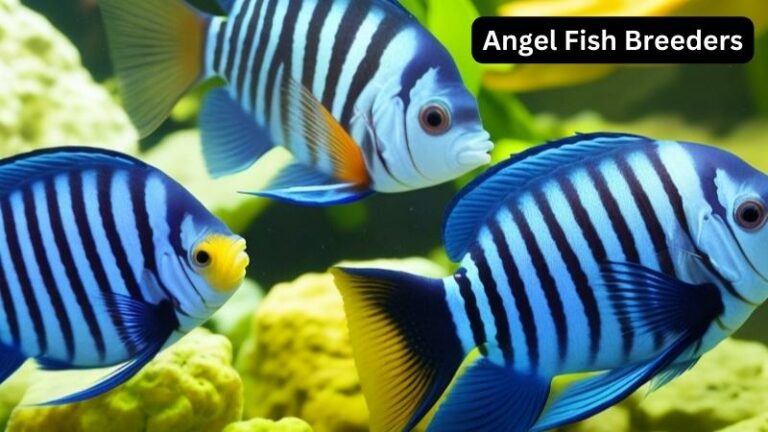Why Is My Fish Tank Turning Brown
Are you wondering why is my fish tank turning brown? Don’t worry, you’re not alone! It can be a puzzling sight, but fear not, we’re here to help you understand what might be going on.
Now, let’s dive into the possible reasons behind your fish tank turning brown.
One possible culprit is algae. Algae are microscopic plants that can bloom in your fish tank, creating a brownish tint. But why does this happen? Well, it could be due to excessive light, nutrient imbalances, or poor water quality. Don’t fret, though! We’ve got some tips and tricks to keep those algae at bay.
So, if you’re curious to learn more about why your fish tank is turning brown and how to fix it, keep reading! We’ll guide you through the process and help you keep your aquarium crystal clear. Let’s get started!
:strip_icc()/yellow-or-brown-aquarium-water-1381217_final-5bdb757f46e0fb002d76612a-0a52e89c9a4f4a139fd58ef83c8bc36f.jpg)
Why is My Fish Tank Turning Brown: Causes and Solutions
Having a fish tank can be a visually appealing and therapeutic addition to any space. However, if you’ve noticed that your once-clear fish tank is starting to turn brown, it’s important to address the issue promptly. A brown fish tank can be unsightly and harmful to your fish if left untreated. In this article, we will explore the reasons behind a fish tank turning brown and provide practical solutions to restore the clarity and health of your aquarium.
The Effects of Excessive Algae Growth
Algae are microscopic plants that occur naturally in aquariums. However, when the conditions in your fish tank are ideal for algae growth, they can multiply rapidly and cause your tank to turn brown. Excessive algae growth can be caused by factors such as an overabundance of nutrients, prolonged exposure to sunlight, and inadequate filtration and water movement. When algae colonize the glass, substrate, and decorations in your tank, it can create a brown and murky appearance.
To combat excessive algae growth, consider making the following adjustments:
- Perform regular water changes to reduce the nutrient levels in the tank.
- Ensure your tank is located away from direct sunlight.
- Upgrade your filtration system to improve water quality.
- Introduce algae-eating fish or invertebrates that can help control algae growth.
The Impact of Uneaten Food and Waste
Another common reason why fish tanks turn brown is the accumulation of uneaten food and fish waste. When fish are overfed or if there’s excessive waste in the tank, it can break down and release organic compounds into the water. These compounds, combined with the presence of bacteria, can result in brown or yellowish discoloration. Additionally, uneaten food left in the tank can decompose and contribute to the problem.
Here are some measures you can take to address the issue:
- Feed your fish the appropriate amount of food according to their needs, ensuring they finish everything within a few minutes.
- Regularly siphon the substrate to remove any uneaten food or excess waste.
- Consider adding bottom-dwelling scavengers, such as snails or catfish, to help consume leftover food.
- Maintain a regular cleaning schedule to prevent waste build-up.
Understanding the Role of Tannins
Tannins are natural substances found in driftwood, leaves, and botanicals. While they can provide a natural and aesthetically pleasing look to your aquarium, they can also cause the water to turn brown. When submerged in water, the tannins are released and create a tea-like appearance. While this type of discoloration is harmless to fish, it can be undesirable for some aquarists.
If you prefer a clear, pristine look for your fish tank, here are a few options:
- Pre-soak driftwood, leaves, or botanicals before adding them to the tank to minimize tannin leaching.
- Use activated carbon in your filter system to help remove tannins from the water.
- Consider alternative decorations that do not release tannins.
Addressing Water Quality Issues
Poor water quality can also contribute to a brown fish tank. One possible cause is excessive dissolved organic matter, which can result from overstocking the tank or inadequate filtration. Dissolved organic matter can cause the water to appear murky and brownish. Additionally, high levels of ammonia or nitrite can also lead to a brownish tint in the tank.
To ensure optimal water quality and clarity, follow these guidelines:
- Avoid overstocking your tank and maintain appropriate fish-to-water volume ratios.
- Invest in a high-quality filtration system that is suitable for the size of your aquarium.
- Regularly test and monitor water parameters, including ammonia and nitrite levels.
- Perform routine water changes to maintain a healthy environment for your fish.
Seeking Professional Assistance
If you’ve tried various solutions and your fish tank is still turning brown, it may be beneficial to seek the expertise of a professional aquarium maintenance service or consult with an experienced aquarist. They can assess your specific situation, identify any underlying issues, and provide tailored solutions to restore the clarity and health of your fish tank.
Preventing Future Brown Tank Episodes
Once you have successfully resolved the issue of your fish tank turning brown, it’s important to take preventative measures to maintain its clarity and health.
Consider the following tips:
- Establish a regular maintenance routine, including monitoring water parameters, performing regular water changes, and cleaning the tank and filter.
- Avoid overfeeding your fish and be mindful of their specific dietary needs.
- Choose tank decorations that are less likely to release tannins or contribute to excessive algae growth.
- Ensure proper lighting and minimize sunlight exposure to prevent excessive algae growth.
By implementing these preventative measures, you can enjoy a beautiful and vibrant fish tank without the frustrating and unattractive brown discoloration.
Remember to always prioritize the well-being of your fish and provide them with a clean and healthy environment.
Key Takeaways: Why is my fish tank turning brown?
- Excess algae growth can cause the water in your fish tank to turn brown.
- Overfeeding your fish can contribute to the brown coloration by increasing nutrient levels in the water.
- Lack of proper cleaning and maintenance can lead to organic matter buildup, resulting in a brownish tint.
- Brown water can also be caused by excessive uneaten food or decaying plants.
- Water discoloration may indicate low oxygen levels or the presence of harmful bacteria.
Frequently Asked Questions
Are you wondering why your fish tank is turning brown? Don’t worry, we’ve got all the answers you need. Read on to find out the reasons behind this common aquarium issue.
Why is the water in my fish tank turning brown?
The most common reason for brown water in a fish tank is the presence of tannins. Tannins are natural compounds found in driftwood, leaves, and other organic matter. When these materials are introduced to your aquarium, tannins are released into the water, giving it a brownish hue. While it may not be visually appealing, tannins are generally harmless to fish and can even provide some health benefits.
Another possible cause of brown water is excessive algae growth. If your tank is exposed to excessive light or if the water parameters are imbalanced, it can lead to an overgrowth of algae. The algae produce pigments that can tint the water brown. Testing the water quality and properly managing light exposure can help prevent this issue.
How can I get rid of the brown water in my fish tank?
To remove tannins and clear up the brown water in your fish tank, you can try a few methods. One option is to perform regular water changes. By replacing a portion of the water with fresh, clean water, you can dilute the tannins and reduce their intensity.
Using activated carbon in your filter can also be effective in removing tannins and other impurities from the water. The activated carbon acts as a filter, absorbing the tannins and leaving the water clearer. However, keep in mind that activated carbon needs to be replaced regularly to maintain its effectiveness.
Can I prevent brown water in my fish tank?
Yes, there are steps you can take to prevent your fish tank from turning brown. If you’re using driftwood or any other tannin-releasing materials, pre-soaking them before adding them to the tank can help leach out some of the tannins. Boiling the driftwood can also be effective in removing excess tannins.
Another preventive measure is to properly balance the lighting in your aquarium. Too much light can promote algae growth, which can turn the water brown. Ensure your tank is not exposed to direct sunlight and consider using a timer for your aquarium lights to provide a consistent and appropriate amount of light for your fish and plants.
Are there any health risks associated with brown water in a fish tank?
In most cases, brown water in a fish tank is not harmful to fish. Tannins, although visually unappealing, are generally safe and can even have some positive effects on fish health. They can help create a natural environment that mimics the fish’s native habitat and can be beneficial for certain species, such as South American cichlids.
However, if you notice any other changes in your fish’s behavior or appearance, it’s important to monitor the water parameters and seek advice from a knowledgeable aquarium hobbyist or professional. Sudden changes in water quality can stress fish and make them more susceptible to diseases, so it’s crucial to maintain a healthy and stable environment.
Can brown water in a fish tank harm live plants?
While some plants may not be as aesthetically pleasing in brown water, most aquatic plants can tolerate and even thrive in water with tannins. In fact, some plants, such as Cryptocoryne species, may benefit from the presence of tannins as they provide additional nutrients and can enhance their growth. However, if your plants are struggling or showing signs of distress, it’s important to assess the overall health of the tank and make necessary adjustments.
It’s worth noting that not all brown water is due to tannins. If your tank has persistently brown water and it’s negatively affecting your plants, it could be due to other water quality issues, such as excessive organic waste, high ammonia levels, or inadequate lighting. Regular testing and maintenance are crucial for the well-being of both your fish and plants.
:strip_icc()/brown-aquarium-algae-1378629-FINAL-757b9049c61d44faa2fa646ee3d319e7.png)
Why New Aquariums Go BROWN | Fixing Brown Diatom ALGAE
Summary
Your fish tank turning brown is usually due to algae growth caused by too much light and nutrients. You can prevent this by reducing the amount of light and controlling the amount of food you give to your fish.
Keeping your tank clean and properly maintaining your filter can also help. Regular water changes and adding live plants can further improve the water quality. If you follow these steps, your fish tank will stay clean and clear for your fish to enjoy!


